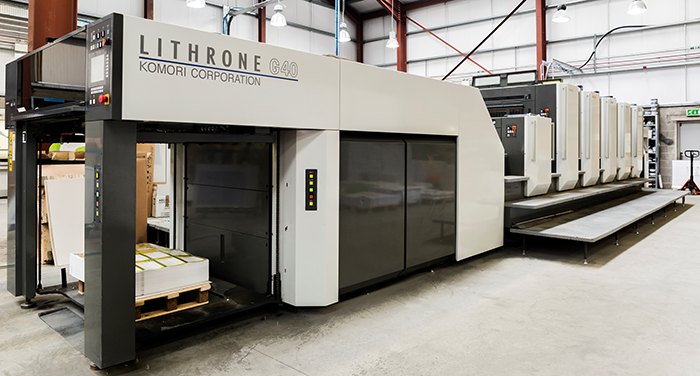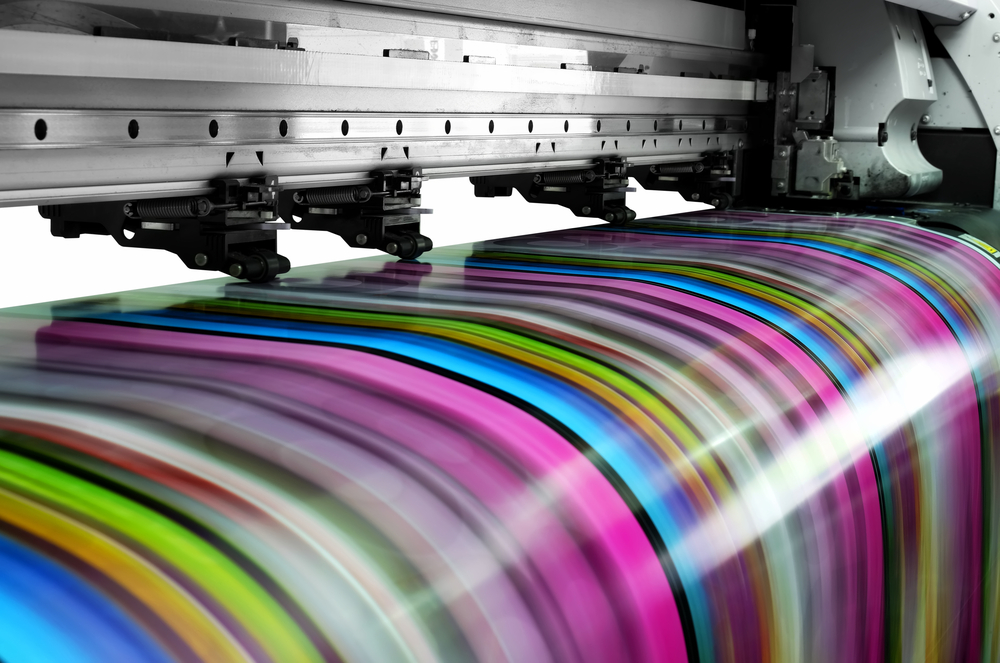The Essential Guide to Comprehending Litho Printing and Its Applications
Litho printing stands as a significant method in the printing industry, rooted in the principles of oil and water repulsion. This technique not only delivers high-quality pictures however likewise provides to numerous industrial requirements. Its applications range from advertising and marketing materials to packaging, showcasing its adaptability. As the market adapts to brand-new modern technologies, the development of litho printing questions regarding its future and relevance in an electronic landscape. What exists in advance for this enduring technique?

What Is Litho Printing?
Litho printing, a widely made use of printing technique, relies upon the principle of oil and water repulsion. This technique utilizes a flat printing surface area, normally a metal plate, which is treated to guarantee that the picture areas are responsive to oil-based inks while the non-image areas repel them. The process starts with the production of a picture on the plate, frequently via illustration or photographic methods. Once the photo is prepared, home plate is dampened with water, followed by the application of ink. The ink adheres only to the picture areas, enabling precise recreation of graphics and message. Litho printing is preferred for its capacity to create high-grade prints with fine detail and vivid shades. It is commonly used in industrial applications, including newspapers, publications, and packaging, showcasing its adaptability and effectiveness in satisfying the needs of modern-day printing.
The History of Lithography
Lithography is a contemporary printing staple, its beginnings trace back to the late 18th century when German dramatist Alois Senefelder created the method in 1796. Created as an approach for duplicating messages and images, lithography made use of a level stone surface area to create prints through a chemical process. Senefelder's innovation enabled for higher flexibility and imaginative expression compared to previous printing methods.By the 19th century, lithography acquired extensive approval, becoming a prominent option among artists and publishers. It enabled the automation of images, maps, and posters, notably impacting the printing sector. The technique even more developed with the introduction of lithographic presses, improving effectiveness and quality.As the industrial change advanced, lithography adapted to meet the demands of commercial printing, paving the means for modern-day applications. Today, it stays a vital strategy in different markets, consisting of posting, packaging, and art reproduction.
How Litho Printing Works
A key function of litho printing is its reliance on the principle of oil and water repulsion - litho printing. In this procedure, photos are moved from a level surface, usually a steel or polymer plate, to paper. Home plate is dealt with so that the areas planned for printing bring in ink, while the non-image locations repel it as a result of their affinity for water. The printing starts by moistening home plate with water, which follows the non-image areas. Consequently, an oil-based ink is used, sticking just to the designated photo areas.When the plate enters into contact with the substratum, the ink is moved, producing a print. The litho printing process is qualified of producing high-quality pictures with fine information. It is commonly made use of for automation due to its effectiveness and uniformity, making it a favored technique for business printing applications
Benefits of Litho Printing
One notable advantage of litho printing is its ability to generate high-quality photos continually, making it a perfect choice for commercial projects. This printing technique uses a flat printing plate, guaranteeing also ink circulation and sharp details. Litho printing is likewise renowned for its shade precision, allowing vibrant and true-to-life recreations, which is important for branding materials.Moreover, it sustains a wide range of substrates, including paper, cardboard, and also certain plastics, boosting its convenience. The procedure is affordable for big runs, as economic situations of range reduce per-unit prices. On top of that, litho printing has a quick turnaround time, enabling for reliable production schedules.Its durability likewise means that printed products resist fading, making certain that the last item preserves its visual appeal gradually. Overall, these advantages make litho publishing a recommended choice throughout numerous sectors, adding to its enduring appeal.
Applications of Litho Printing in Service
As companies progressively seek dependable and high-quality printing solutions, litho printing becomes a vital player in various applications. This method is especially favored other for creating advertising and marketing products such as sales brochures, leaflets, and directories, many thanks to its capability to provide vibrant colors and sharp images. Additionally, litho printing is often used for packaging solutions, permitting business to produce captivating labels and boxes that enhance item appeal.In the field of business identity, litho printing contributes in producing professional stationery, calling card, and marketing merchandise, which aid enhance brand name recognition. It is commonly made use of in the posting industry for printed products such check my source as publications and magazines, where regular top quality is paramount. Overall, litho printing's convenience and effectiveness make it an important tool for companies aiming to communicate efficiently and develop a strong market visibility.
Artistic Uses of Litho Printing
Litho printing offers as a versatile tool in the domain name of printmaking, offering musicians an one-of-a-kind technique to express their creative thinking. This method permits a large range of artistic applications, from typical prints to contemporary interpretations. By checking out the nuances of litho printing, artists can harness its distinct qualities to improve their work.

Printmaking Methods Summary
The creativity of printmaking includes a diverse variety of techniques, with litho printing standing out for its special strategy to photo development. This method counts on the principle of oil and water repulsion, allowing musicians to draw straight onto a limestone or steel plate with an oily tool. Once prepared, home plate is dampened and inked, transferring the image onto paper through pressure. Litho printing is commemorated for its ability to generate great information and abundant tonal variants, making it a popular option among musicians. In addition, the process is functional, suiting both standard strategies and modern-day adaptations. This versatility enables litho printing to bridge various creative styles, improving the printmaking landscape with its distinct qualities and abilities.
Special Artistic Applications
Checking out the unique creative applications of litho printing exposes its impressive versatility in different creative areas. Artists use litho printing to create intricate styles and structures, permitting for expressive and thorough works. The procedure facilitates the recreation of vivid shades, making it ideal for illustrations and great art prints. Several modern musicians accept lithography for its capability to incorporate traditional techniques with contemporary principles, leading to innovative art work. Furthermore, litho printing is commonly utilized in the manufacturing of limited edition prints, boosting their value and allure. The tactile quality of litho prints adds a distinct measurement, bring in collection agencies and art lovers alike. On the whole, litho printing remains a significant tool for imaginative expression, bridging traditional techniques with contemporary creativity.
The Future of Litho Printing in a Digital Globe
As the printing sector evolves, litho printing encounters the obstacle of incorporating digital modern technologies to remain appropriate. Strategies concentrated on digital assimilation, together with patterns in sustainability and innovation, will certainly form its future - litho printing. Understanding these dynamics is necessary for industry stakeholders looking to adjust to a rapidly altering landscape
Digital Combination Methods
A growing variety of imp source litho printing firms are embracing electronic integration methods to stay affordable in a progressively electronic landscape. By including digital workflows, these companies can improve processes and improve efficiency. This integration allows for real-time information administration and improved communication in between divisions, decreasing turnaround times significantly. Additionally, digital devices enable much better modification and customization of printed materials, accommodating details customer demands. Business are likewise taking on crossbreed printing solutions that integrate standard litho strategies with electronic technologies, providing adaptability in manufacturing. Leveraging information analytics aids in understanding market patterns and consumer choices, allowing services to make educated choices. Generally, electronic combination is ending up being necessary for litho printing firms intending to innovate and react to developing market needs.
Sustainability and Innovation Trends

Regularly Asked Questions
What Products Are Commonly Utilized in Litho Printing?
The products frequently used in litho printing consist of light weight aluminum plates, ink, water, and paper. Each element plays a necessary role in the printing process, making sure top quality picture recreation and effective transfer of ink onto the substrate.
Just How Does Litho Printing Contrast to Digital Printing?
Litho printing uses superior shade uniformity and high quality for huge runs, while digital printing succeeds in brief runs and customization. Each technique has unique benefits, accommodating different demands based upon manufacturing range and cost-efficiency.
What Is the Common Turn-around Time for Litho Printing Projects?
The typical turnaround time for litho printing jobs varies, normally ranging from a few days to numerous weeks. Elements affecting this timeframe consist of task intricacy, quantity, and needed ending up procedures, influencing overall production schedules.
Can Litho Printing Accommodate Customized Sizes and Formats?
Litho printing can certainly fit custom-made sizes and styles, permitting flexibility in design. This versatility enables clients to achieve unique print outcomes tailored to their specific demands, boosting the total performance of their projects.
What Are the Environmental Influences of Litho Printing?
The ecological influences of litho printing consist of resource consumption, chemical use, and waste generation. Improvements in lasting techniques and eco-friendly materials are progressively decreasing these unfavorable effects, advertising a much more environmentally liable method to printing.